| Textbook | NCERT |
| Board | CBSE Board, UP board, JAC board, HBSE Board, Bihar Board, PSEB board, RBSE Board, UBSE Board |
| Class | 12th Class |
| Subject | History |
| Chapter | Theme Six |
| Chapter Name | BRICKS, BEADS AND BONES |
| Topic | NCERT Notes for Class 12 History Chapter 6 Bhakti-Sufi Traditions |
| Medium | English |
| Especially Designed Notes for | CBSE, ICSE, IAS, NET, NRA, UPSC, SSC, NDA, All Govt. Exam |
NCERT Notes for Class 12 History Chapter 6 Bhakti-Sufi Traditions, (history) exam are Students are taught thru NCERT books in some of the state board and CBSE Schools.
As the chapter involves an end, there is an exercise provided to assist students to prepare for evaluation. Students need to clear up those exercises very well because the questions inside the very last asked from those.
Class 12 History Notes Of Chapter 6 Bhakti-Sufi Traditions shows the different types of beliefs emerging in several parts of the subcontinent and you will also get to know how different religions of people worship their idol deities and how they show love for gods and goddesses.
NCERT Class 12 History Revision Notes PDF
This chapter, class 12 history notes Bhakti-Sufi Tradition Pdf, will let you know about different people following different religions by worshipping different deities.
NCERT Class 12 Notes Bhakti-Sufi Tradition Chapter 6 Pdf
NCERT Notes for Class 12 History Chapter 6 Bhakti-Sufi Traditions
Class 12 History Chapter 6 Bhakti-Sufi Traditions
The various religious belief of the subcontinent was reconstructed from textual traditions which included compositions by poet-saints. These traditions were modified and sometimes abandoned by the next generations, thus posing a challenge to historians. Historians also used sources like hagiographies or biographies of saints written by their followers or members of their religious sect.
The striking feature during the period between the eighth to eighteenth centuries.
During this period, the increasing visibility of a wide range of gods a large number of gods and goddesses in sculpture as well as in texts appeared. This indicated the continued and extended worship of the major deities such as Vishnu, Shiva and the goddesses, visualized in a variety of forms.
The integration of cults
Historians who have tried to understand these developments suggest that there were at least two processes at work.
- One was a process was related to spreading of Brahmanical ideas. This was exemplified by the composition, compilation and preservation of Puranic texts in simple Sanskrit verse .They were meant to be accessible to women and Shudras who were excluded from Vedic learning.
- There was a second process was that, the Brahmanas started accepting the beliefs and practices of other social categories.
Example of Second Process
The most striking example of the second process was evident at Puri, Odisha. Here the main deity was identified as Jagannatha, a form of Vishnu. The deity is represented in a very different way.
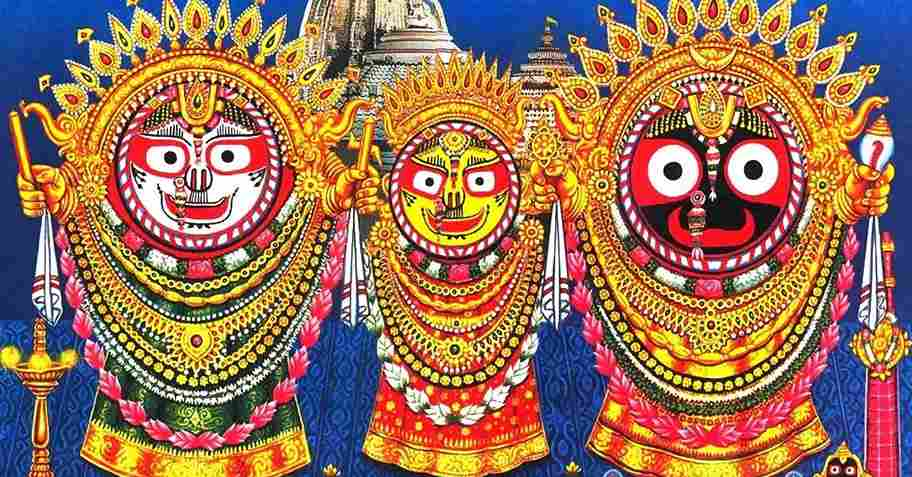
- Through an example we can say that a local deity, whose image was and continues to be made of wood by local tribal specialists, was recognized as a form of Vishnu. At the same time, Vishnu was visualized in a way that was very different from that in other parts of the country.
- Goddess were worshipped simply in the form of a stone with some colour pigment on it like Ochre. These local deities were provided an identity as a wife of the main male deities, like they were equated with Lakshmi, the wife of Vishnu and with Parvati, the wife of Shiva.
Difference and Conflict
There is difference between Vedic and Puranic traditions. The main dieties of Vedic pantheon (religion), Agni, Indra and Soma, become marginal figures.
These are rarely visible in textual or visual forms. Whereas Vishnu, Shiva and the Goddess in Vedic mantras, have little expansion with Puranic mythologies. Despite these differences, Vedas continued to be as superior.
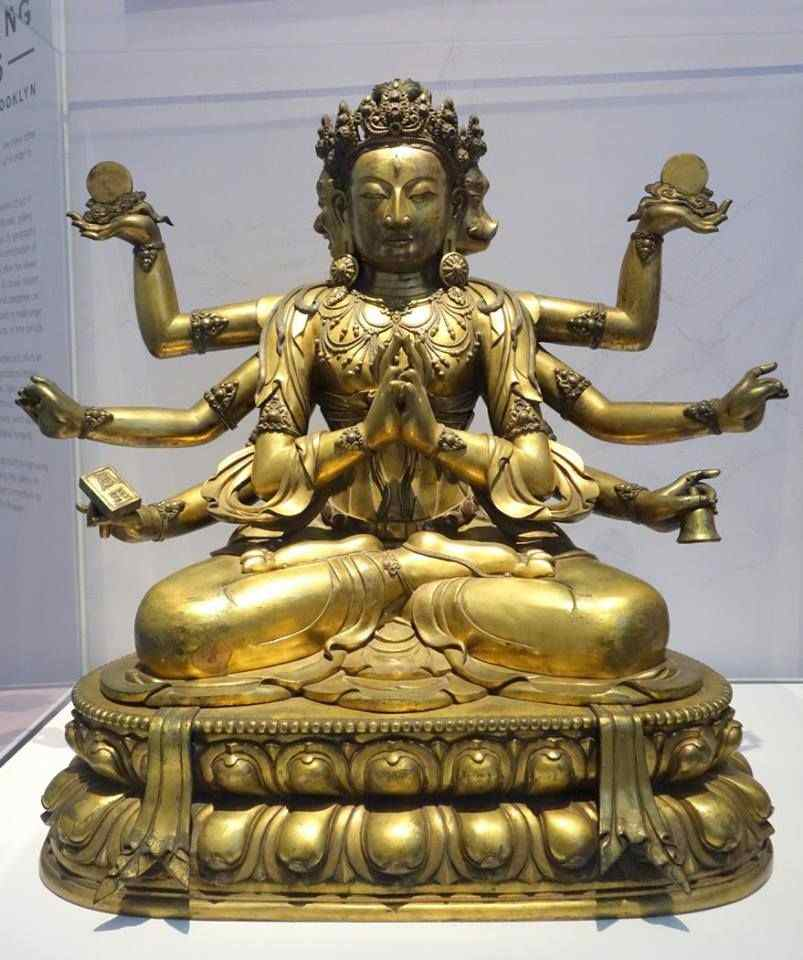
Conflicts that arose during the Bhakti movement
- There were conflicts between those who followed the Vedic tradition and those who practiced the Tantric way of worshipping deities.
- Those who valued Vedic tradition often condemned the practices that went beyond the performance of sacrifices and chanting of mantras.
- On the other hand those who engaged in Tantric practices ignored the authority of the Vedas.
Tantric worship
- The forms of worship often associated with goddess were classified as Tantric.
- Tantric worship was widespread in several parts of the subcontinent. It was open to women and men.
- Devotees often tended to project their chosen deity, either Vishnu or Shiva, as supreme.
- Those who followed Tantric rejected the caste and class within the ritual context.
- Many of these ideas influenced Shaivism and the Buddhism.
Early Traditions of Bhakti
During the evolution of different forms of worship, the poet-saints emerged as leaders. Brahmanas remained as intermediaries between Gods and devotees in several forms of bhakti.
These new traditions also accommodated and accepted women and the lower castes who were earlier considered ineligible for freedom. An important element of diversity was also present in these new traditions of bhakti.
The historians of religion classified Bhakti traditions into two broad categories: saguna (with attributes) and nirguna (without attributes).
- Saguna included traditions that focused on the worship of specific deities such as Shiva, Vishnu and his avatars (incarnations) and forms of the goddess or Devi.
- Nirguna bhakti on the other hand was worship of an abstract form of god. i.e. existing in thought or as an idea but not having a physical or concrete existence of God.
The Alvars and Nayanars of Tamil Nadu
- During the sixth century, some of the Bhakti movements were led by the Alvars and the Nayanars.
- Alvars were devotees of Vishnu and Nayanars were the devotees of Shiva.
- They travelled from place to place singing hymns in Tamil in praise of their gods.
- During their travels the Alvars and Nayanars identified certain shrines as residences of their chosen deities.
- Later big temples were built at those places and developed as pilgrimage centres.
Attitude towards caste
- According to some historians, the Alvars and the Nayanars started a movement of protest against the caste system and the Brahmanas and attempted to reform the system. The devotees came from different social backgrounds such as artisans, cultivators, and even from the caste that were considered “untouchable”
Compositions of the Alvars and Nayanars
- The compositions of the Alvars devotees of shiva and the Nayanars devotees of shiva are considered to be as important as the Vedas.
- For, instance, one of the major collection of poems composed by the Alvars, the Nalayira Divyaprabandham, was described as the Tamil Veda and the text was significant like the Vedas that were used by the Brahmanas.
Women devotees.
One of the striking features of these traditions was the presence of women. For example, there was a saint poet called Andal, a woman Alvar. Her compositions were sung and sung even today. She saw herself as the beloved of Vishnu and her verses expressed her love for the deity.
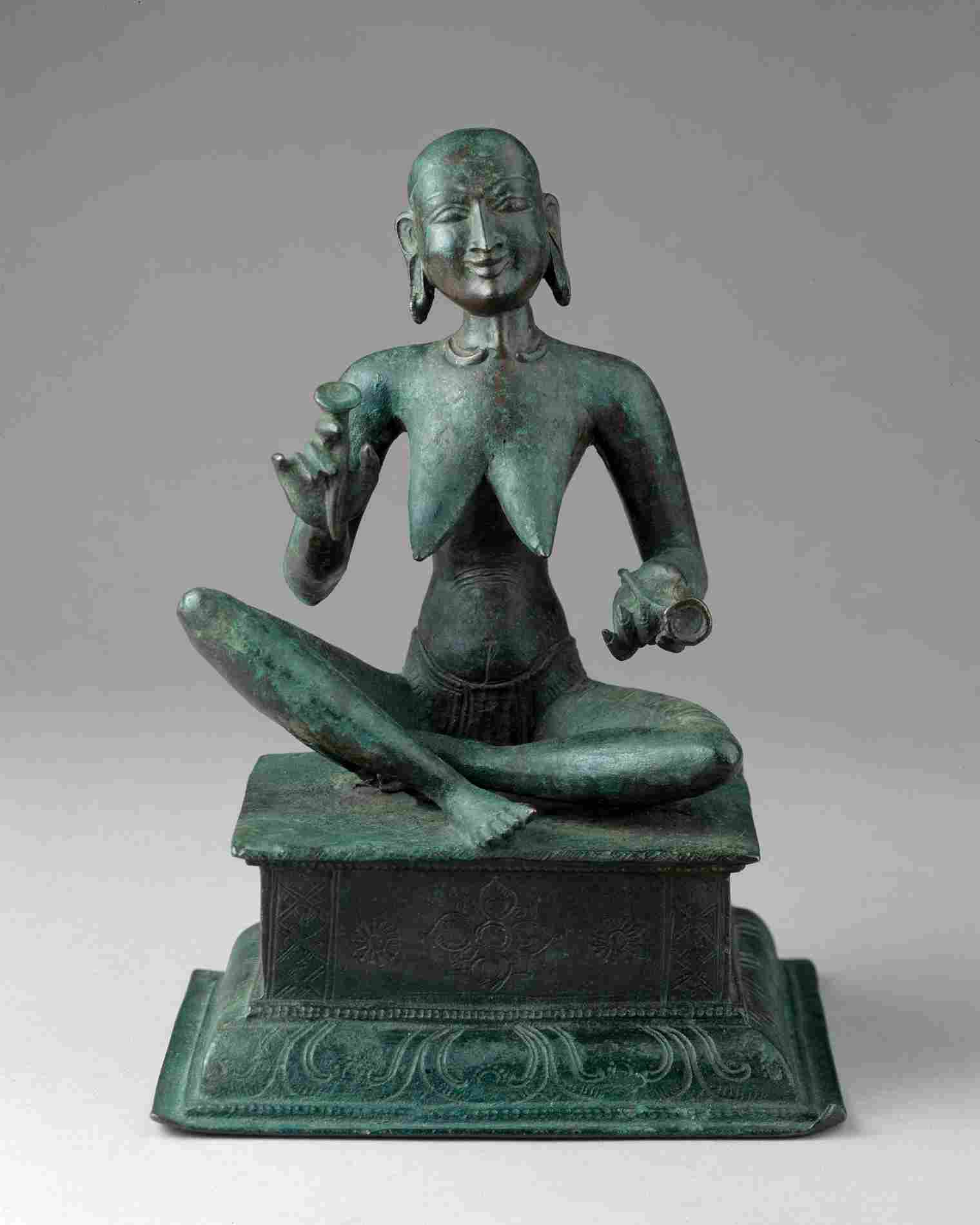
Another woman, Karaikkal Ammaiyar, a devotee of Shiva adopted the path of extreme asceticism to attain her goal. Her compositions were preserved within the Nayanar tradition.
These women renounced their social obligations but did not become nuns. Their presence was a challenge to patriarchal norms.
Relation with the state
- From the second half of the first millennium there is evidence for states, including those of the Pallavas and Pandyas (c. sixth to ninth centuries CE).
- The saint –poets the Alvars and the Nayanars were opposed to Buddhism and Jainism.
- Buddhism and Jainism had been prevalent in this region for several centuries, which have support from merchant and artisan communities. These religions traditions received occasional royal patronage.
- Poet’s opposition to Buddhism and Jainism was the major theme in Tamil Bhakti hymns. This was particularly marked in the compositions of the Nayanars. The reason was due to competition between members of other religious traditions for royal patronage.
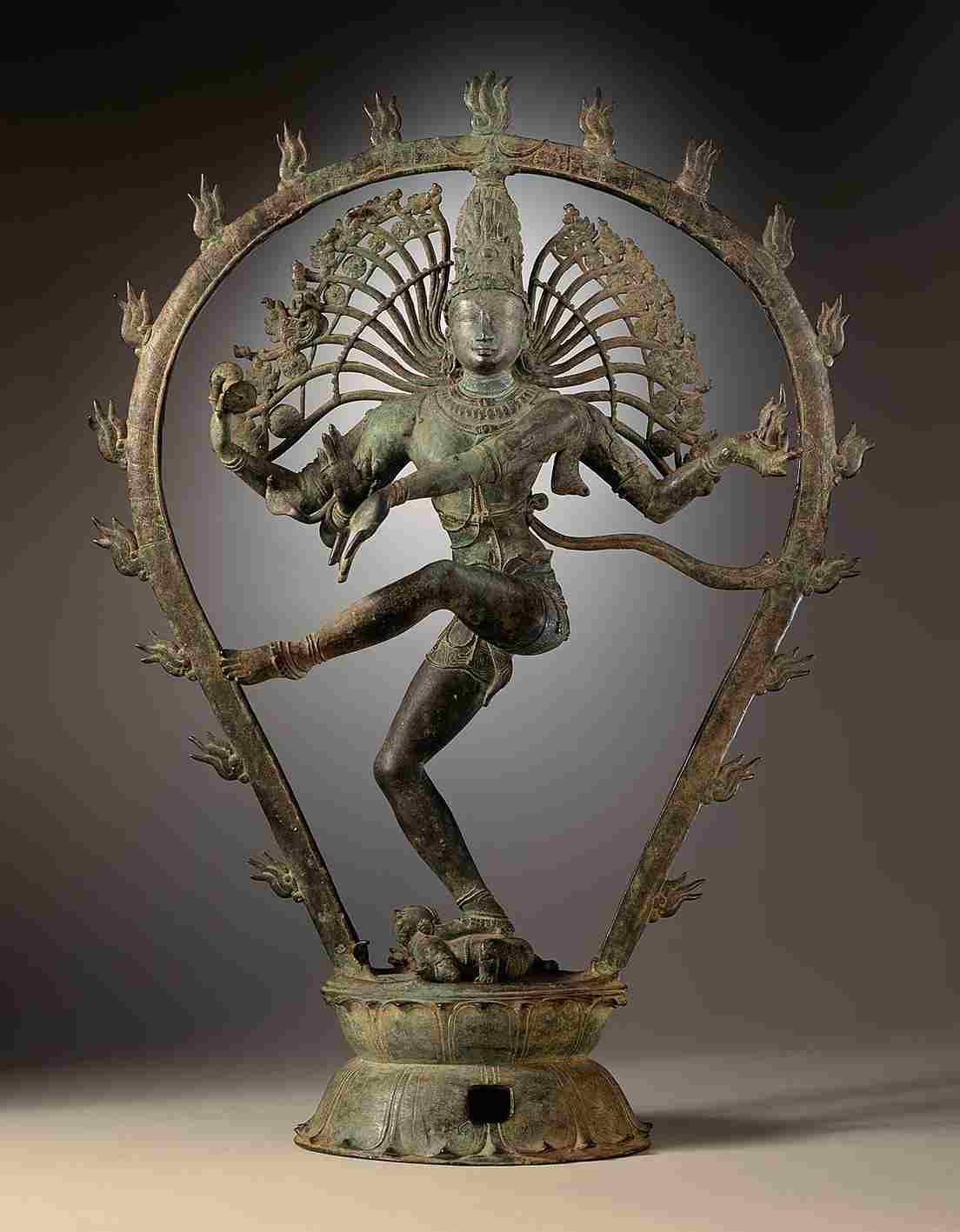
Patronage of Chola rulers
- Powerful Chola rulers of the ninth to thirteenth centuries supported Brahmanical and bhakti traditions by making land grants and constructing temples for Vishnu and Shiva.
- Some of the magnificent temples for Shiva such as temples in Chidambaram, Thanjavur, and Gangaikondacholpuram were constructed with the support of Cholas rulers.
- In this period bronze sculpture of Shiva was produced after inspired from the Nayanars artists. Both Nayanars and Alvars were revered by Vellala peasants and got their support.
- Chola rulers also tried to get support of divine by building splendid temples with stone and metal sculpture.
- The Chola kings introduced the singing of Tamil Shaiva hymns under royal patronage, taking the initiative to collect and organize them into a text called Tevaram.
- According to Inscriptional evidence, around 945 CE, the Chola king Parantaka I had constructed the metal images of Appar, Sambandar and Sundarar in a Shiva temple. These were carried in procession during the festivals of these saints.
The Virashaiva Tradition in Karnataka
- During the twelfth century, a new movement Virashaiva in Karnataka was led by a Brahmana named Basavanna (1106-68).
- He was a Jaina and a minister in the court of a Kalachuri king.
- His followers were known as Virashaivas(heroes of Shiva) or Lingayats(wearers of the linga)
- The tradition of Virashaiva was derived from Vachanas means saying. It was composed in Kannada by women and men who joined the movement.
Lingayats and their belief
- Lingayats are an important community even today. They worship Shiva in the form of linga.
- They wear a small linga in a silver case over the left shoulder.
- These men were admired as Jangama or wandering monks.
- Lingayats believe that after death, the devotee will be united with Shiva and will not return to this world.
- Therefore, they do not practice funerary rites such as cremation as prescribed in the Dharmashastras. Instead; they ceremonially bury their dead body.
A challenge to the Caste system
- Some practices like post-puberty marriage and the remarriage of widows which were disapproved in the Dharmashastras were encouraged by the Lingayats.
- The Lingayats challenged the idea of caste and the “pollution” attributed to some groups by Brahmanas.
- They also questioned the theory of rebirth.
- Our knowledge about the Virashaiva tradition is came from vachanas (literally,sayings)composed in kannada by those who joined the movement.
Religious ferment in North India (Religious condition of north India)
- In North India, deities like Vishnu and Shiva were worshipped in temples which were mainly built with the support of rulers.
- According to historians, in north India, several Rajput states emerged and in most of these states Brahmanas occupied important positions by performing rituals. There was no attempt to question their position directly.
- At the same time there were other religious leaders who were out of the orthodox Brahmanical systems, and were gaining ground during the twelfth century. They were the Naths, Jogis, and Siddhas.
- Many of them came from artisanal groups such as weavers, who became important due to the development of organised craft production.
- These religious leaders questioned the authority of the Vedas. They expressed temselves in languages spoken by ordinary. However, they were unable to win the support of the ruling elites.
- The coming of Turks was a new element which led to the establishment of Delhi Sultanate. Power of many Rajput states and Brahmanas undermined. This led to changes in the realm of culture and religion. One of the most important development was the coming of the Sufis.
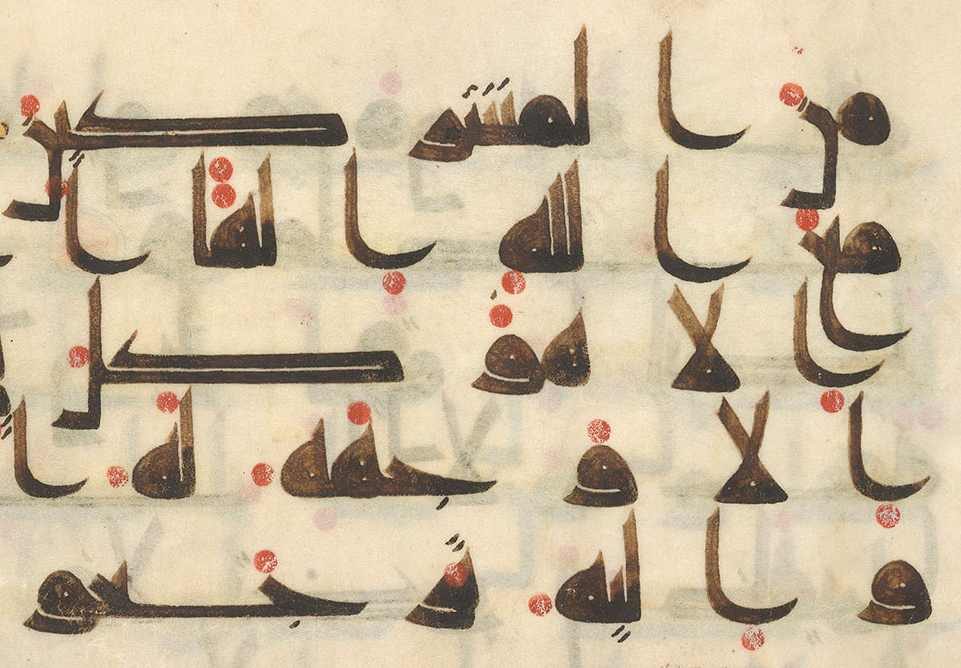
Islamic Traditions
When Central Asian people settled in the North-Western parts of the subcontinent Arab merchants visited ports along the Western coast in the first millennium CE. With the advent of Islam from seventh century, these regions became a part of Islamic world.
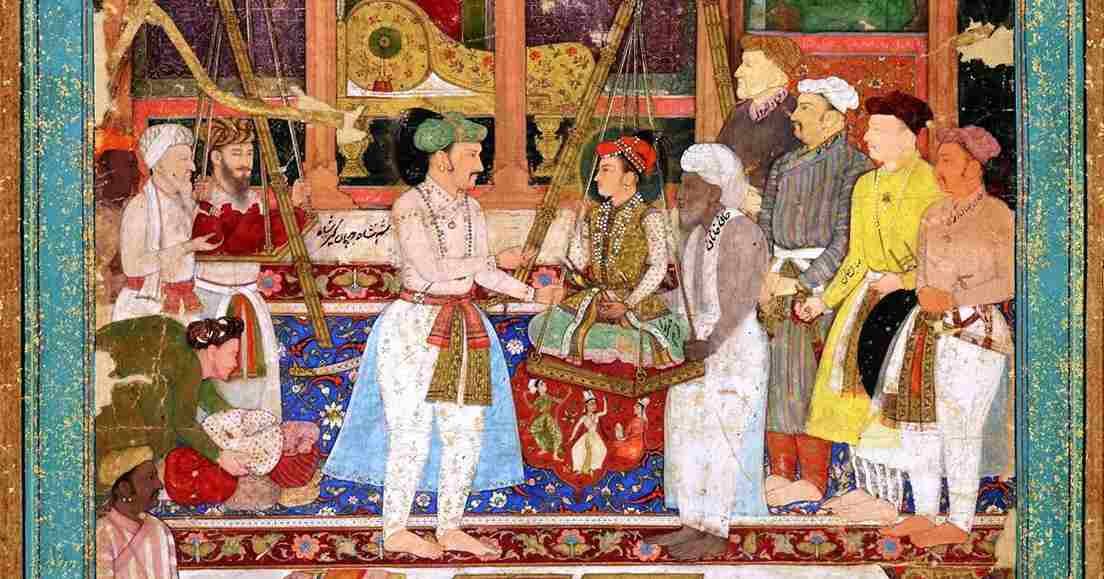
The coming of Turks and the Islamic tradition
- The Arab general named Muhammed bin Qasim conquered Sind in 711 CE and became a part of the caliph’s territory. During the thirteenth century the Turks and Afghans established the Delhi Sultanate.
- Sultanates were also formed in the Deccan and other parts of the subcontinent. Islam was recognized as the religion of several areas. This continued with the establishment of the Mughal Empire.
- Muslim rulers were to be guided by the Ulema, which wasexpected to ensure that they ruled according to the Sahri’a.
- The Zimmi means “protected” and is derived from the Arabic word zimma, protection. It was developed for peoples who followed revealed scriptures, such as the Jews and Christians, and lived under muslim rule. They paid a tax called jizya and received protection from muslims. In India this status was extended to Hindus as well.
- In general, rulers often adopted a flexible policy towards their Muslim and non-Muslim subjects. They expressed devotion towards non-Muslim religions leaders. Several grants were made for subjects by Akbar and Aurangzeb and many other Mughal rulers.
The popular practice of Islam
The five pillars of faith in Islam
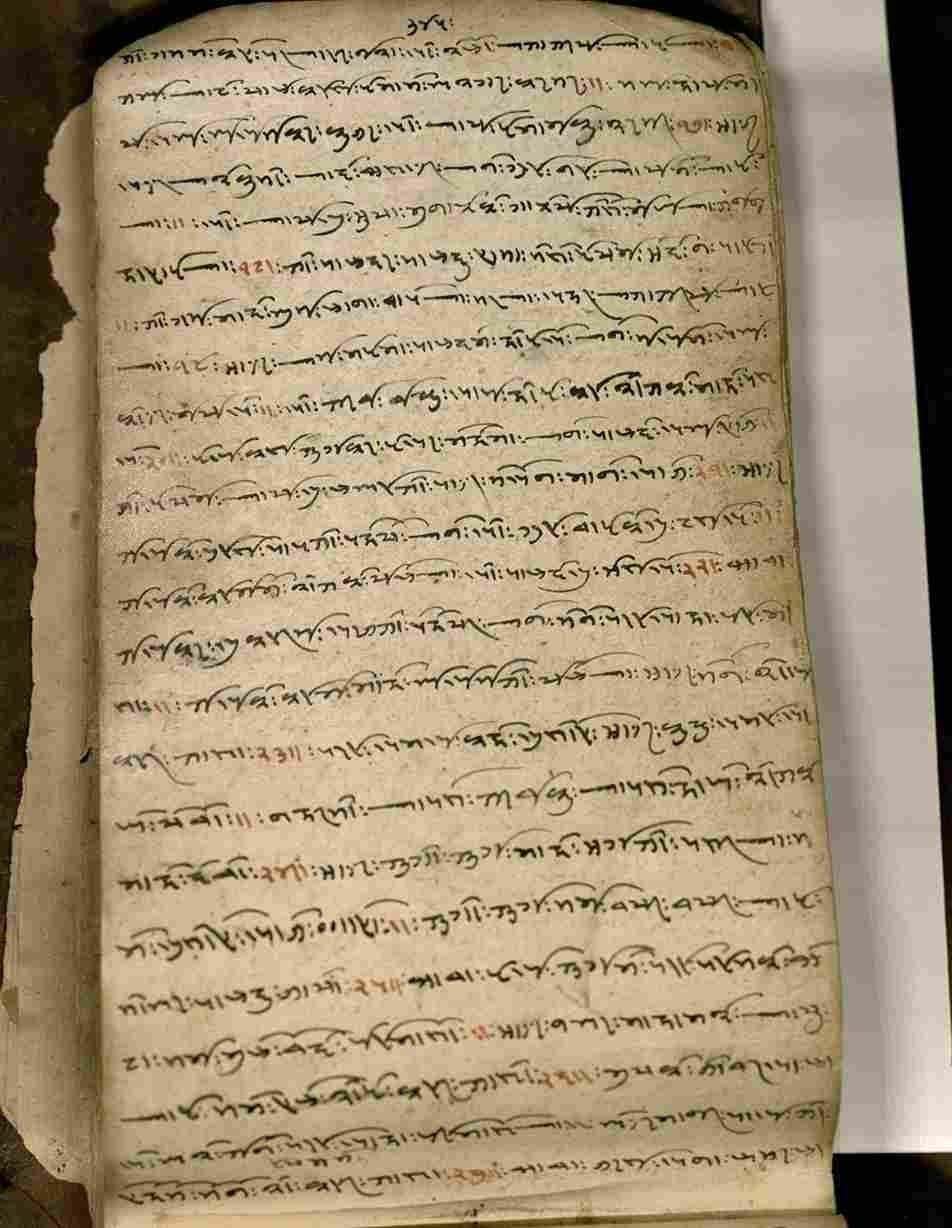
Those who have accepted Islam, also accepted the five pillars of the faith. They are:
- There is one God, Allah, and Prophet Muhammad is his messenger (shahada)
- Offering prayers five times a day (namaz/salat)
- Giving alms (zakat)
- Fasting during the month of Ramzan(sawam)
- Performing the pilgrimage to mecca(hajj)
- These features were practiced differently among sectarian affiliations like Sunni and Shi’a they were also influenced from the local customs.
- For example, Arab Muslim traders who settled Malabar Coast adopted Malayalam language and matriliny system.
- The best example of the The blend of Islam with local traditions was evident in the architecture especially construction of mosque.
- The architectural features of mosques are universal. The orientation towards Mecca and the placement of the mihrab (prayer niche) and the minbar (pulpit) was as per Islamic traditions but they show variations in several features like in roofs and building materials.
- There are variations such as roofs and building materials.
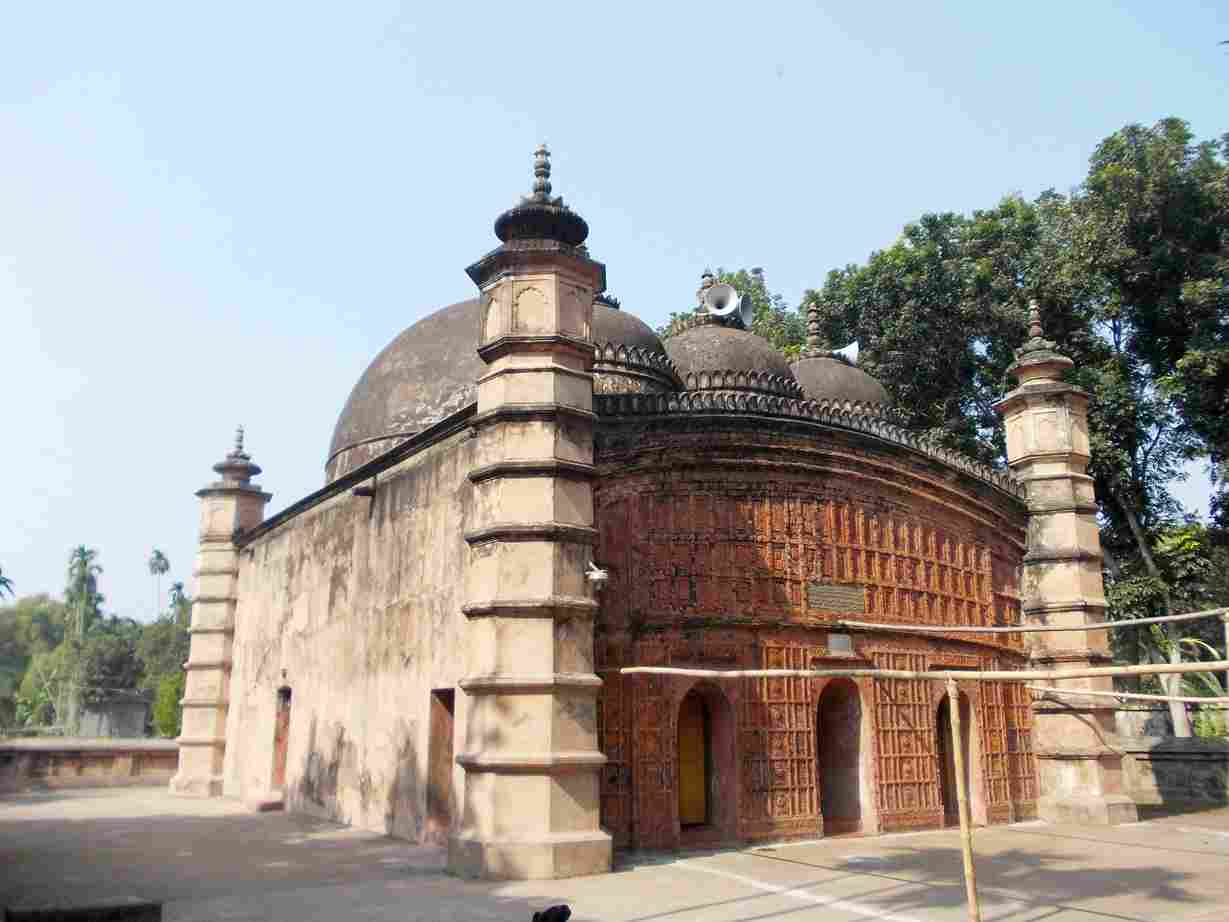

Names for Islamic Communities
- Historians who studied Sanskrit texts and inscriptions dating between the eighth and fourteenth centuries pointed out that the term Musalman or Muslim was never used.
- People were identified from the region they came from like Turkish rulers were called Turushka, Tajikistan people were Tajika and people from Persia were called Parashika.
- New migrants were referred with terms used for other people like, the Turks and Afghans were referred as Shakas and Yavanas.
- Mlechchha was the more general term used for the migrant communities, which indicated that they did not observe the rules of caste society and spoke languages that were not derived from Sanskrit.
- These terms had disrespectful ideas, but were not denoted a different religious community of Muslims in opposition to Hindus.
The Growth of Sufism
- Sufis were a group of religious-minded people in Islam. They believed in asceticism (severe self-discipline) and mysticism (spiritual belief of union with God) in protest against the growing materialism of the Caliphate.
- Sufis laid emphasis on seeking salvation through intense devotion and love for God by following his commands. The Sufis interpret the Quran on the basis of their personal experience.
Khanqahs and Silsilas
By the eleventh century Sufism evolved into a well-developed movement with a body of literature on Quranic studies and Sufi practices. Sufism was organized in an institution by organising communities for travelers called khanqah (Persion).
- These institutions were controlled by a teaching master known as shaikh (in Arabic) , pir or murshid (in Persian). He enrolled disciples and appointed a successor.
- He established rules for spiritual conduct and interaction between inmates as well as between laypersons and the master.
Sufi Silsilas
Around the twelfth century, sufi silsilas began to take form in different parts of Islamic world. Silsila literally meaning a chain signifies a continuous link between master and disciple, this chain stretched as an unbroken spiritual link to the Prophet Muhammed. The spiritual power and blessings were transmitted to devotees through this channel.
Special rituals to admit people into the group were developed in which persons who wanted to enter the group took an oath of commitment, wore a piece of cloth and shaved their hair.
Dargah
Dargah is a Persian term. Its meaning is tomb-shrine. When the sheikh died, his tomb shrine became the centre of devotion for his followers. This encouraged the practice of pilgrimage or ziyarat to his grave, particularly on his death anniversary. This,signifies the union of his soul with God. It was believed that, after death the soul of sheikh get united with the soul of Allah. People sought their blessings to attain material and spiritual benefits. Thus evolved the cult of the sheikh revered as wali.
Outside the Khanqah
- Some sufis disrespected khanqah and took to mendicancy (poorness) and observed celibacy (self-restraint). These sufis were known as mystics.
- They ignored rituals and observed extreme form of strict and simple way of living.
- They were known by different names like Qalandars, Madaris, Malangs, Haidaris, etc. Because of their deliberate refusal to obey the shari’a, these people were often referred to as be-shari’a, and in sufis who obeyed shari‘a were called ba-shari’a sufis.
Ba-sharia and Be-sharia sufis
Be-shari’a were those who refuse to obey the shari’a, and in sufis who obeyed shari‘a were called Ba-shari’a sufis.
The Chishtis in the Subcontinent
The Chistis were the most influential among the groups of sufis who migrated to India in the later twelfth century. The Chishtis were the most influential, because they adapted local environment and adopted various features of Indian devotional traditions.
Life in the Chishti khanqah
- The khanqah was the centre of social life of Chistis.
- It comprised several small rooms and a big hall called Jama’at khan, where inmates and visitors lived and prayed.
- The Shaikh lived in a small room on the roof of the hall where he met visitors in the morning and evening. The courtyard was surrounded by a veranda and a boundary wall was present around the complex.
- There was an open kitchen (langar), ran on futuh (voluntary charity). From morning till evening people from all walks of life, came to seek the blessings from the Shaikh in various matters.
- Other visitors included poets such as Amir Hasan Sijzi and Amir Khusru and the court historian Ziyauddin Barani and all of them wrote about the Shaikh.
Chishti Devotionalism: Ziyarat and qawwali
Ziyarat
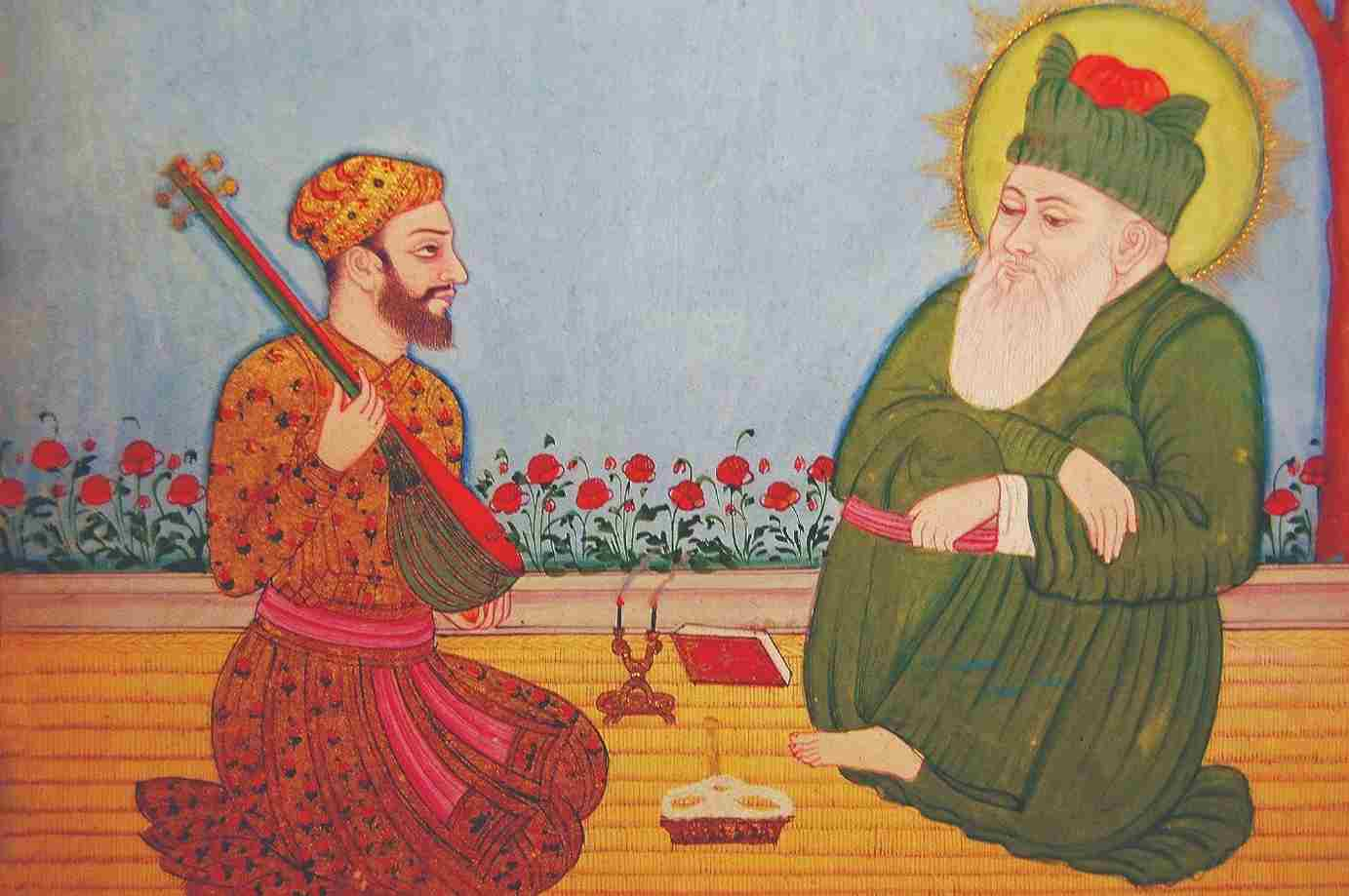
It means pilgrimage to tombs of sufi saints. This was common all over the Muslim world. This practice is an occasion for seeking the Sufi’s spiritual grace (barakat). For more than seven centuries people from different walks of life expressed their devotion at the dargahs of the five great Chishti saints. The most respected shrine is that of Khwaja Muinuddin who was popularly known as Gharib Nawaz (comforter of the poor).
Qawwali
The use of music and dance including mystical chants performed by specially trained musicians or qawwals to evoke divine ecstasy is also part of ziyarat. The Sufis remember God either by reciting the zikr(the Divine Names)or evoking His presence through sama or the performance of mystical music known as qawwali.
Dargah of Khwaja Muinuddin

- The most popular dargah is that of Khwaja Muinuddin, popularly known as “Gharib Nawaz” (comforter of the poor).The dargah became so popular because of the following reasons.
- The austerity and piety of the Shaik, greatness of his spiritual successors and the patronage of royal visitors.
- Location of Ajmer was another factor for its popularity. As it was located on the trade route connecting Delhi and Gujarat, it attracted number of travellers.
- Muhammad bin Tughlaq was the first Sultan to visit the dargah.
- Akbar, the Mughal emperor visited dargah at Ajmer fourteen times in his life and these visits were aimed at seeking blessings for new conquests, fulfilling his of vows and to get sons.
- Many of his wishes were soon fulfilled and thus as an offering:
- He gave generous gifts on each visit
- He offered a huge cauldron to facilitate cooking for pilgrims.
- He even got a mosque constructed within the dargah
Languages and communication
- The Chishtis composed their poems in several languages. The Chishtis used Hindavi or Persian language. Sufis such as Baba Farid composed poetry in local language, which were incorporated in the Guru Granth Sahib. Some Sufis composed long poems or masnavis to express ideas of divine love using human love as an symbol.
- For example, the prem-akhyan (love story) Padmavat composed by Malik Muhammad Jayasi revolved around the romance of Padmini and Ratansen, the king of Chittor.
- Sufi poetry was composed in the Dakhani language around the Bijapur and Karnataka region. Women while performing household chores like grinding grain and spinning sang these poems.
- Other poems were in the form of lurinama(lullabies) or wedding songs(shadinama).The Sufis of this region were inspired by the kannada vachanas of the Lingayats and the Marathi abhangs of the sants of Pandharpur.
Sufis and the state.
- Simplicity and maintaining a distance from worldly power were major features of the Chisti tradition. The Sufis accepted unsolicited grants and donations from the political elites. The sultans set up charitable trusts (auqaf) as endowments for hospices and granted tax-free land (inam).
- The chishtis accepted donations in cash and kind and used for their immediate requirements such as food, clothes, living quarters and ritual necessities such as sama. The moral high status of the Sufis attracted people from all walks of life.
- Sufi’s charity and scholarship and people’s belief in their magical powers made them famous among the masses.
- When the Turks set up the Delhi Sultanate, they resisted the pressure of the ulama on implementing shari‘a as state law because they expected opposition from their subjects, the majority of whom were non-Muslims.
- Sultans asked for Sufis help, who derived authority directly from God and did not depend on jurists (counsellor) to interpret the shari‘a.
- Sometimes there were instances of conflict between the Sultans and the Sufis. To assert their authority, both expected that certain rituals like prostration and kissing of the feet, should be performed.
- Sufi Shaikh often took high-sounding titles. For instance, the disciples of Nizamuddin Auliya called him as Sultan-ul-Mashaikh (means sultan amongst Shaikhs).
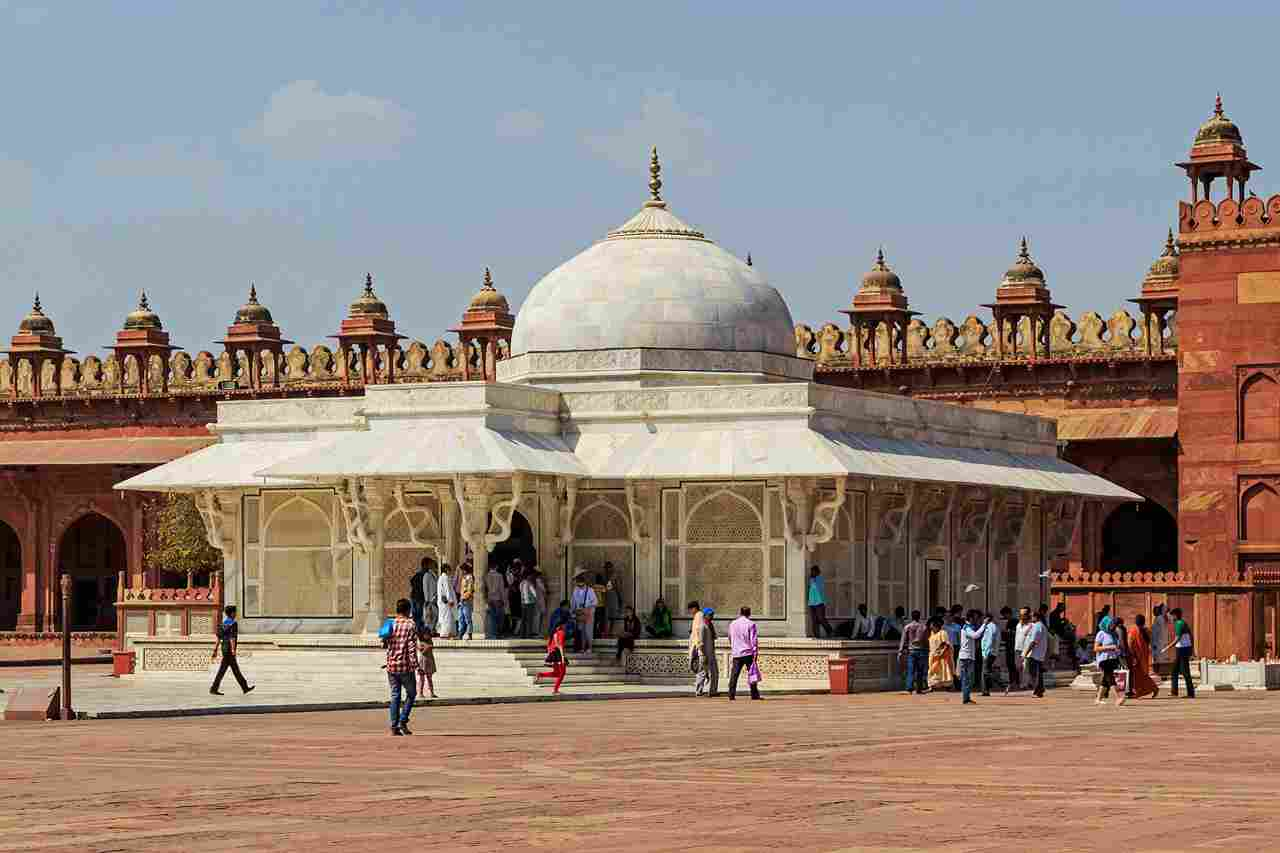
New devotional paths: Dialogue and Dissent in North India
During the fourteenth and fifteenth centuries, Kabir was one of the most outstanding examples of a poet-saint. Verses ascribed to Kabir have been compiled in three distinct traditions.
Historians have tried to analyse the language, style and content of these poems. Debates about whether Kabir was a Hindu or a Muslim by birth are well reflected in hagiographies. Hagiographies within the Vaishnava tradition suggest that he was born a Hindu, Kabirdas but brought up by a poor Muslim community of weavers. They also suggest that he was initiated into bhakti by a guru, Ramananda.
The poems of Kabir used words guru and satguru but do not mention the name of any specific guru. Historians pointed out that it is very difficult to establish that Ramananda and Kabir were contemporaries.
Sources to reconstruct the life of Kabir
The Kabir Bijak is preserved by the Kabirpanth (the path or sect of Kabir) in Varanasi and in Uttar Pradesh. The Kabir Granthavali is associated with the Dadupanth in Rajasthan and many of his compositions are found in the Adi Granth Sahib. All these compilations were made after the death of Kabir. Kabir’s poems have survived in several languages and dialects and sometimes with special language of nirguna poets (the sant bhasha) and others known as ulatbansi(upside-down sayings)
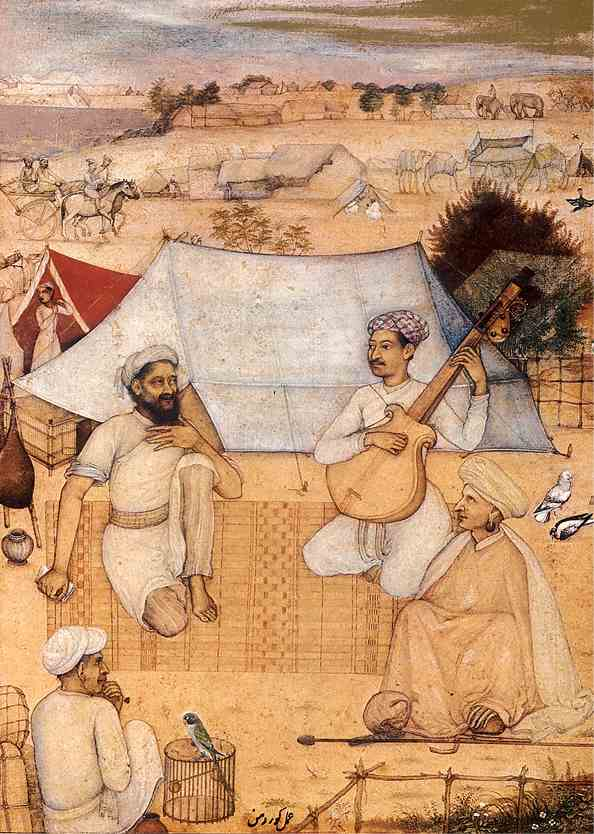
Teachings of Kabir
- Kabir tried to describe the Ultimate Reality including Islam. According to him the Ultimate Reality was Allah, Khuda, Hazrat and Pir. He also used certain Vedic terms such as Brahman and Atman.
- He also used some yogic traditional terms such as shabda(sound) or shunya(emptiness)Some poems of Kabir expressed conflicting and diverse ideas. Some poems attacked Hindu polytheism and idol worship and others use sufi concept of zikr and ishq(love) to express the Hindu practice of nam-simaran(remembrance of God’s name).
Baba Guru Nanak and the Sacred Word
Baba Guru Nanak was born in a village called Nankana Sahib near Ravi in Punjab in 1469.He trained to be an accountant and studied Persian.He was married at a young age but he spent most of his time among sufis and bhaktas.He also travelled widely.
Baba Guru Nanak
Baba Guru Nanak (1469 – 1539) was born in a Hindu merchant family in a village called Nankana Sahib near the river Ravi in the predominantly Muslim Punjab. He was trained as an accountant and studied Persian.
He was married at a young age, but he spent most of his time among Sufis and bhaktas. He also travelled widely.
Teachings of Guru Nanak
- His teachings are well reflected or spelt out in his hymns and These hymns suggest that he advocated a form of nirguna bhakti. He rejected sacrifices, ritual baths, image worship and the scriptures of Hindus and Muslims.
- According to him, the Absolute or ‘rab’ had no gender or form. He proposed a simple way to connect to the Divine by remembering the Divine Name.
- He expressed his ideas through hymns called “shabad” in Punjabi, the language of the region and sang with different ragas.
- He organized his followers into a community. He set up rules for congregational worship (sangat). He appointed one of his disciples, Angad, to succeed him as the preceptor (guru).Guru Nanak did not want to establish a new religion.
- After his death, his followers consolidated their own practices to form a distinct community.
- The fifth guru, Guru Arjun compiled Guru Nanak”s hymns along with those of his four successors and other religious poets like Baba Farid, Ravidas and Kabir in the Adi Granth Sahib. These hymns called “gurbani” are composed in various languages.
- The tenth Guru, Guru Gobind Singh, included the compositions of the ninth guru; Guru Tegh Bahadur. This scripture was called the Guru Granth Sahib. Guru Gobind Singh also laid the foundation of the Khalsa Panth (army of the pure).
He also defined its five symbols:
Uncut hair, a dagger, a pair of shorts, a comb and a steel bangle. It was under the leadership of Guru Gobind Singh that the community became a socio-religious and military force.
Mirabai, the devotee princess
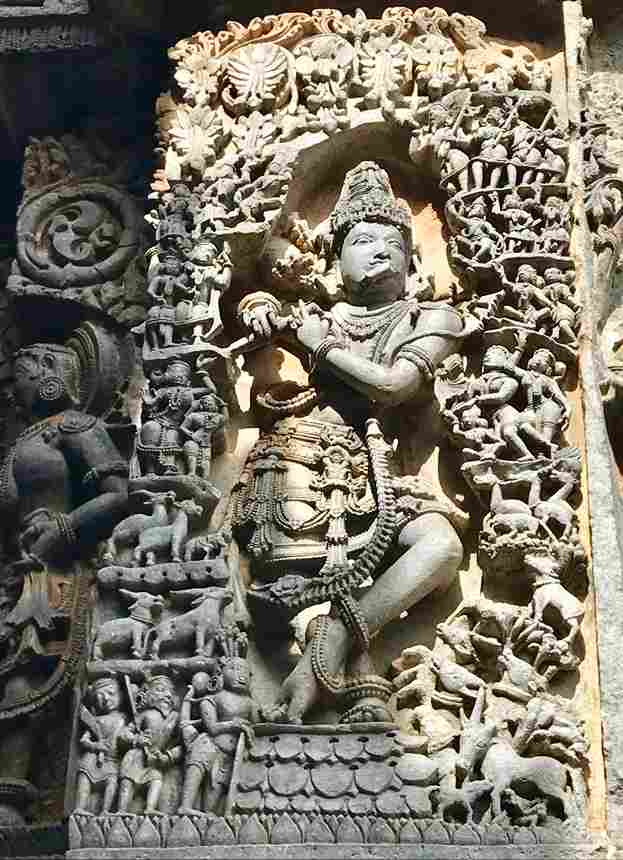
- Mirabai was the best known woman poet within the bhakti tradition. She was a Rajput princess from Merta in Marwar. She was married to a prince of the Sisodia clan of Mewar against he wishes. She defied her husband and not submit to the traditional role of wife and mother.
- She recognized Krishna, the avatar of Vishnu as her lover. Her in-laws tried to poison her, but she escaped and lived as wandering singer composing songs with intense expressions of emotion.
- Her most famous preceptor was Raidas; a leather worker. It shows her defiance of the norms of caste society.
- She had donned the white robes of a window or the saffron robe of the renouncer.Although she did not attract a sect or group of followers, she has been recognized as a source of inspiration for centuries.
- We get information about her from the bhajans attributed to her.
Reconstructing histories of religious traditions
- Historians used a variety of sources to reconstruct histories of religious traditions. These include stupas, monasteries, and temples.
- Historians also draw on textual sources including devotional literature and hagiographies. These sources enable historians to understand certain religious beliefs and practices.
- They range from the simple direct language of the vachanas of Basavanna to the ornate language of the farman of the Mughal emperors.
- Understanding each type of text requires different skills. Historians have to acquire familiarity with several languages and to be aware of the subtle variations in style that characterize each type.
Ncert notes for class 12 history chapter 6: Timeline
Some Major Religious Teachers in the Subcontinent
| c 500 – 800 CE | Appar, Sambandar, Sundaramurti in Tamil Nadu. |
| c 800 – 900 CE | Nammalvar, Manikkavachakar, Andal, Tondaradippodi in Tamil Nadu. |
| c 1000 – 1100 CE | CE Al Hujwiri, Data Ganj Bakhsh in the Punjab; Ramanujacharya in Tamil Nadu. |
| c 1100 – 1200 CE | Basavanna in Karnataka. |
| c 1200 – 1300 CE | Jnanadeva, Muktabai in Maharashtra; Khwaja Muinuddin Chishti in Rajasthan; Bahauddin Zakariyya and Fariduddin Ganj-i Shakar in the Punjab; Qutbuddin Bakhtiyar Kaki in Delhi. |
| c 1300 – 1400 CE | Lal Ded in Kashmir; Lal Shahbaz Qalandar in Sind; Nizamuddin Auliya in Delhi; Ramananda in Uttar Pradesh; Chokhamela in Maharashtra; Sharafuddin Yahya Maneri in Bihar. |
| c 1400 – 1500 CE | Kabir, Raidas, Surdas in Uttar Pradesh; Baba Guru Nanak in the Punjab; Vallabhacharya in Gujarat; Abdullah Shattari in Gwalior; Muhammad Shah Alam in Gujarat; Mir Sayyid Muhammad Gesu Daraz in Gulbarga, Shankaradeva in Assam; Tukaram in Maharashtra. |
| c 1500 – 1600 CE | Sri Chaitanya in Bengal; Mirabai in Rajasthan; Shaikh Abdul Quddus Gangohi, Malik Muhammad Jaisi, Tulsidas in Uttar Pradesh. |
| c 1600 – 1700 CE | Shaikh Ahmad Sirhindi in Haryana; Miyan Mir in the Punjab. |
Ncert notes for class 12 history chapter 6: Important terms
- Saguna : It means with attributes.
- Nirguna : It means without attributes.
- Alvars : Those who are immersed in the devotion to Vishnu.
- Nayanars : These were leaders who were devotees of Shiva.
- Anthologies : It means collection of poems.
- Lingayats : These were the wearers of the linga.
- Vachanas : It means sayings.
- Ulama : They were scholars of Islamic studies.
- Shari’a : It was law governing the Muslim community.
- Ijma : It means consensus of the community.
- Zimmi : It means protected.
- Jizya : The tax laid on non-muslims to get protection by Muslims.
- Zakat : It means giving alms/ donations.
- Murids : It means disciples.
- Ziyarat : It means pilgrimage.
- Khanqah : It is a hospice/lodging for travellers, especially one run by a religious order.
- Ulatbansi : It means upside down sayings.
Class 12 History chapter 6 book pdf
Ncert notes for class 12 history chapter 6: Faqs
Question: How did Karaikkal Ammaiyar become the greatest figure of Nayanar tradition? Explain.
Answer: Karaikkal Ammaiyar was a devotee of Shiva. She adopted the path of extreme asceticism in order to attain her goal. Her composition was a challenge to patriarchal norms of the society and it was preserved with the Nayanar tradition. In this way, she became the greatest figure of Nayanar’s philosophy.
Question: What are the main teachings of Lingayats?
Answer: Against the caste system. Questionsed belief in the theory of rebirth. Not believed in Child marriages. Encouraged widows remarriage.
Question: Why do thousands of devotees visit dargahs of Muslim saint?
Answer: Pilgrimage, called Ziyarat to the tombs of Sufi saints is very common all over the Muslim world. For more than seven centuries people of various creeds, classes and social backgrounds have travelled to the dargahs of the five great chisthi saints and expressed their devotions. This practice is an occasion for seeking the sufi’s spiritual grace (barakat).
Question: What do you mean by Zimmi?
Or
Give the meaning of Zirnrna. Who was Zimmis?
Answer: The word ‘Zimmi’ was derived from the Arabic word ‘Zimma’ which meant ‘protection’ In other words, the Zimmis were protected people. They were non-Muslims and included Hindus, Jains, Jews, and Christians were They lived under Muslim rulership and paid a tax called ‘Jizya’. So they were entitled to protection by the Muslims.
Question: Describe the causes of the rise of Bhakti movement?
Ans. (i). Influence of Vaishnavism
(ii). Evil practices of the Hindues
(iii). Fear of sprit of Islam
(iv). Influence of sufi sects
(v). Emergence of great reformers.
Question: What are Kabir’s Ulatbansi composition ?
The Ulatabsnsi composition of Kabir intrinsically upside-side down saying. They re written in a form in which everyday meanings are inverted. They express difficulty capturing the nature of the ultimate reality. They express Kabir’s mystical experiences.
cbsestudyguru.com
We make student